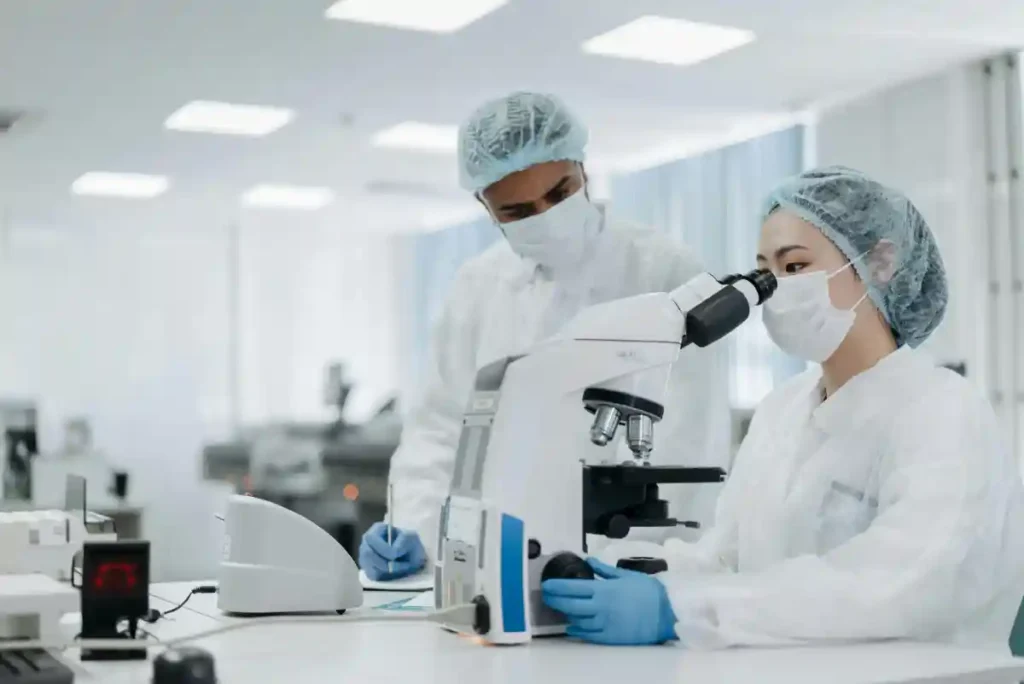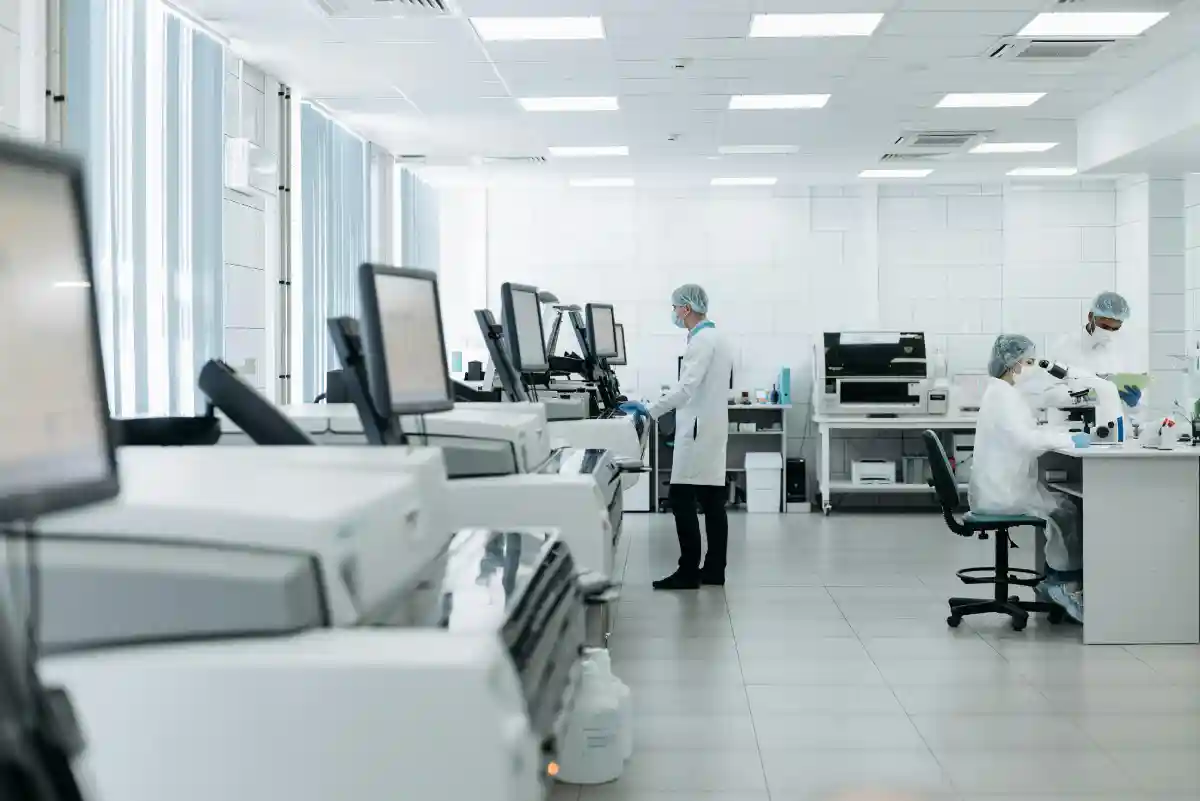Microscopy-based histological assessment has been a fundamental tool in biomedical sciences, pathology, and diagnosis for quite some time, based on conventional approaches that, though less complicated, possess certain inherent limitations. Standard histology often requires time-consuming steps, lengthy tissue sample preparations, and staining, as well as specialized skills in analyzing the obtained microscopic images. Such steps are time-consuming and also tend to undergo some level of human interference, thus affecting the outcome and reliability of the results.
Table of Contents
Introduction to HistoBlur
Let us introduce Histoblur, a new imaging technique with the purpose of solving the problems of histological approaches. Histoblur combines sophisticated imaging techniques with histology, which allows for the improvement in the accuracy, speed, and quality of the images and interpretations. This keeps the chance of human influence to a minimal level, cuts down the duration it takes to process a sample, and makes complex histological data easy to interpret.
Histoblur can be considered a breakthrough in the field of histology. With an appreciation of the methodological inefficiencies of conventional approaches, Histoblur offers not only a more precise and reliable picture of histological analysis but also new avenues of exploration and discovery for investigators and clinicians. However, when it is further examined to its functionalities and uses, one can easily see how Histoblur can change the world.

Technological Innovations Behind Histoblur
Modern advancements that position Histoblur as an industry leader in histology involve not just imaging technology but a combination of high-definition pictures, artificial intelligence, and machine learning. All these factors come together in an effort to develop a tool that can transform the diagnosis of tissue samples.
High-Res Imaging
The foundation of Histoblur is, therefore, high-resolution imaging technology, which offers visual resolution of tissue specimens far superior to those offered by traditional microscopy. This, in turn, is done with the help of modern optical systems, which improve illumination and help distinguish between minor irregularities in tissue structures.
AI-Enhanced Accuracy
The analytical capabilities of Histoblur are powered by Artificial intelligence and machine learning mechanisms. Histoblur is designed to read tissue samples and diagnose the outcomes automatically with very little human error, which are factors that have made tissue sample analysis very time-consuming. Artificial intelligence algorithms are exposed to large amounts of data rendering them capable of detecting variations accurately. This training enables Histoblur to give measurable information within the shortest time possible, converting simple data into useful information.
Automated Accuracy
This tight integration of AI with high-resolution imaging means that the Histoblur service can provide a level of analysis that cannot be beaten. Due to the learning processes that take place iteratively in Machine learning algorithms, the chances of error diagnostically are rare, and dependable diagnoses are made. This integrated workflow is automated, which alleviates work pressure on the healthcare professionals as they can get a solid second opinion within a short period and this helps in knowing their decisions as well. Furthermore, the specifics of the software improvements integrated into Histoblur’s setup allow composing clear and user-friendly interfaces and ensuring that practitioners working with Histoblur, do not necessarily need an advanced technical background to work with it.
Advanced Optical Systems
In addition, the system or a combination of optical systems like the adaptive optics and higher-order aberration correction system contribute significantly to the Histoblur’s performance. These systems incorporate the most advanced lenses and image sensors that help capture fine details in tissue samples that are passed through processing to be analyzed with the help of AI and ML. In this way, the integration of hardware and software helps Histoblur to work with high standards of accuracy and efficiency, thereby enhancing the research outcomes and diagnostic acumen. In other words, the integration of the technologies in Histoblur has provided a progressive standard to histological analysis, which accounts for it as an essential tool in the twenty-first-century medical and scientific domains.
Applications and Benefits of Histoblur
Revolutionary Research Tool
Histoblur is one of the most innovative imaging tools allowing histology to move forward and explore a wide range of applications. Histoblur is an outstanding tool in medical research as it provides high accuracy and time-saving during the investigation of different samples of tissues. Histoblur is useful in revealing the true nature of cancer pathology by helping researchers detect the fine differences in the tumor cells that show signs of malignancy. Such specificity is necessary to create therapies that are more specific and could improve treatment efficiency and the overall prognosis of diseases.
Revolutionary Diagnostics
Histoblur is the software that has brought the change in interpretation of the samples among the pathologists in clinical diagnostics. It helps shorten the time taken to diagnose the diseases by offering high-quality images in a very short period. Also, its AI based algorithms can work through several samples at high accuracy, thus reducing the center of time consumption and enabling efficient delivery of diagnosis. For example, Histoblur can enhance the presentation of amyloid plaques and tau tangles in patients with neurological disorders such as Alzheimer’s disease. This consequently improves the diagnosis of the disease, taking less time while allowing early interventions.
Pharma Advantages
Histoblur also has many advantages to the pharmaceutical industries in particular. In the course of developing drugs, the technology is applied in isolating and evaluating the response of tissues to the new compounds. Also, it speeds up the drug discovery and safety assessment. They allow for greater productivity and higher-sized samples, which translates to better evaluation of possible drug candidates, hence faster time taken to bring new drugs to the market.
High-Resolution Personalization
Another area in which the effects of Histoblur can be regarded as revolutionary is the field of individualized medicine. Histoblur can be incorporated directly into patient care and patient treatment plans can be tailored according to the histological characteristics of the patient’s tissue. It improves the diagnostic aspect and even the treatment plan because the patients’ conditions and needs are unique, therefore improving the treatment outcomes. The ability to link high-throughput imaging with the concept of precision medicine is truly revolutionary and opens the door to the possibility of highly targeted approaches to the management of complicated diseases.
Challenges and Future Directions
Thus, there are several issues following the successes that It has made regarding advanced histological imaging. One of the major challenges in the realization of this study is the technical difficulties associated with incorporating the use of multiple advanced imaging techniques into standard clinical and research practices. The quality achieved for image acquisition and analyses to get a high degree of accuracy calls for frequent calibration and maintenance of equipment, which could be costly. In addition, like most developing technologies, Histoblur systems are expensive to install and maintain initial costs and recurring costs. Such financial prospects may pose a challenge for small institutions or labs especially those with a low cash stash.
Yet another problem erecting the barrier to wide-scale adoption lies in the constant changes that require improvements in the technologies used. Histoblur notes that the field of histology is changing faster, and therefore, to compete effectively, the company needs to adapt. This involves issues such as increased resolution of images and equipment to capture the pictures, improved processing speed, and means of storing numerous high-quality images. The design-friendly interfaces of software are also important to ensure that the technology can be easily used the pathologists with lots of experience in the field as well as new researchers.
They are crucial in addressing these challenges, and hence, it & is important for more research and development to be done. Researchers are making efforts to develop its Optimal modes of to achieve maximum results and within minimum cost. Some of the advances in technology include the use of Artificial intelligence and machine learning to enhance image analysis and thereby minimize the amount of burden placed on the operator. Fortunately, there is a lot of engagement between universities, industry and other authorities to ensure that a culture of constant innovation is encouraged for the creation of technologies.
Moreover, the overall scheme of using Histoblur for histological imaging in the future is not very problematic. These include developments within multimodality imaging that merge histology with genomic, proteomic, and metabolomic information that could provide a more profound look at disease processes. Moreover, some of the possibilities of real-time imaging currently being developed may completely alter intraoperative consultations and diagnostics. That is why, when designing, these technologies may significantly change the specificity and activity of histology and its application in the diagnosis and study of diseases.
Conclusion
All in all, the appearance of Histoblur can be characterized as a turning point in the development of histological analysis. Through advanced imaging techniques, Histoblur improves the resolution when it comes to the evaluation of tissues which means that Histoblur is highly useful in improving the accuracy of diagnoses that are made on the tissues. This innovative technology, apart from automating the workflow of pathology labs, plays a valuable part in medical science. ‘Histoblur,’ where histology, information blur, and high resolution are integrated, then helps researchers reveal cellular structures and functions and thus fosters new perspectives on numerous complicated diseases and their etiologies.
FAQs
What is Histoblur?
Histoblur is an improved imaging modality that aims at improving the contrast and accuracy of histological studies.
Where is Histoblur currently being used?
It is currently used in a number of institutions and centers in academic and clinical practices worldwide. It is also used in research laboratories for tissue analysis and experiments.
What are the prospects for Histoblur?
It has a great future as present and future constant developments are aimed at enhancing the tool. The authors are eyeing further enhancement of the incorporation of more artificial intelligence to perform more enhanced analyses and for time-sensitive diagnosis assistance.






